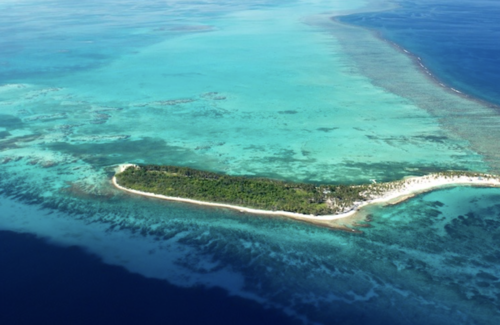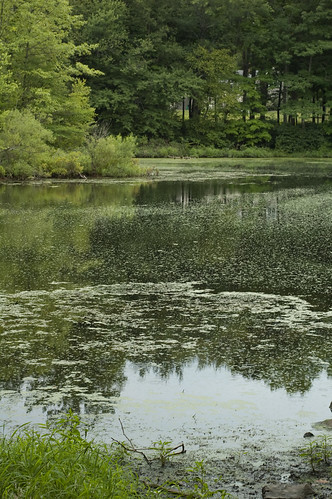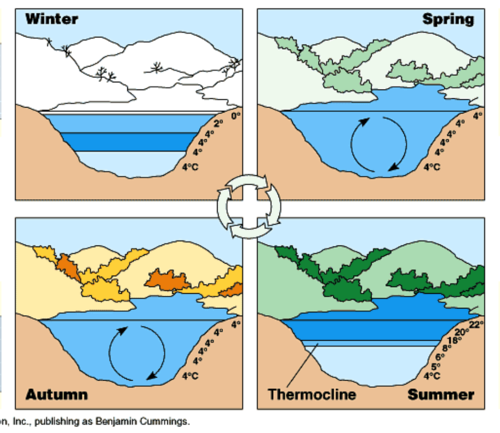Oligotrophic vs Eutrophic Lakes
0.0(0)
0.0(0)
Card Sorting
1/71
There's no tags or description
Looks like no tags are added yet.
Study Analytics
Name | Mastery | Learn | Test | Matching | Spaced |
|---|
No study sessions yet.
72 Terms
1
New cards
Describe oligotrophic lakes.
- Low nutrients
- Clearer water
- Light penetrates deeps
- Often looks blue
- Clearer water
- Light penetrates deeps
- Often looks blue

2
New cards
Describe eutrophic lakes.
- High nutrients
- Murkier water
- Light cannot penetrate as deep
- Often looks green
- Murkier water
- Light cannot penetrate as deep
- Often looks green

3
New cards
What are watersheds?
A ridge of land that separates waters flowing to different bodies of water. It picks up nutrients.
4
New cards
What experiment proves that lakes are closely linked to their landscapes?
The Classical Hubbard Brook experimental forest study.
5
New cards
What is the Hubbard Brook experiment?
It was an experiment to see how changing the landscape would influence the lakes found near them.
6
New cards
Describe what the Hubbard Brook experiment prooved.
Whenever natural vegetation is cleared for development, nutrients are lost from the land and often need to be replaced by fertilizer, which also runs off into surrounding waters. This can cause eutrophication.
7
New cards
What is the original source of mineral nutrients?
Rocks that have been weathered and pass down into rivers and oceans. These eventually precipitate out into ocean sediments. The sediments become compressed by their own weight and geological upheavals, may be raised to become land once more and the weathering process continues.
8
New cards
What is another way the lithosphere can eject minerals into the cycle is through?
Volcanism (volcano activity).
9
New cards
What are dimictic lakes?
Lakes that overturn twice a year at 4°C in the spring and in the fall. In the summer, it has a warm epilimnion and in the winter it has a cold epilimnion.

10
New cards
The prime determinant of nutrient status and trophic classification of a lake is what?
It's surface catchment. (It's geology, terrestrial ecosystems, and land use).
11
New cards
Lakes differ by what things? (~6)
- Age
- Size
- Type of attachment
- Nutrient loading
- Lake morphometry (length, width, height)
- Climate
- Size
- Type of attachment
- Nutrient loading
- Lake morphometry (length, width, height)
- Climate
12
New cards
Are lakes permanent?
No. They each have an origin, a history, and will eventually disappear.
13
New cards
When light enters clear water, what happens?
The longest wavelengths are absorbed first. The colour of the water changes because of this as you go deeper into a blue colour (~440) because it is less rapidly absorbed than red (~650 nm). The blue light penetrates deeper thus causing the blue colour.
14
New cards
In lakes with a lot of yellows/brown colours, how is light penetrating the water system?
Blue light gets absorbed more rapidly because of the yellow and brown humics. This causes light and the water to become more yellow with depth.
15
New cards
What is eutrophication?
The natural nutrient enrichment of lakes over time, mostly from runoff of plant nutrients they receive from the surrounding land.
16
New cards
As lakes age, what happens?
They naturally become eutrophic ovetime.
17
New cards
What is cultural eutrophication?
The acceleration of eutrophication by human activities that add plant nutrients to a lake.
18
New cards
What percentage of Canadian lakes are still oligotrophic?
75%.
19
New cards
What percentage of lakes in the US have a high degree of cultural eutrophication?
~70%
20
New cards
Where can cultural eutrophication come from? (8)
- Runoff and erosion (from cultivation, mining, constriction, and poor land use)
- Runoff from streets, lawns, and construction. (lots of nitrates, phosphates, and ammonia)
- Inorganic fertilizer runoff
- Natural runoff
- Discharge of untreated sewage
- Discharge of treated sewage
- Dissolving of nitrogen oxide
- Draining of wetlands, hog barns, and tile drainage.
- Runoff from streets, lawns, and construction. (lots of nitrates, phosphates, and ammonia)
- Inorganic fertilizer runoff
- Natural runoff
- Discharge of untreated sewage
- Discharge of treated sewage
- Dissolving of nitrogen oxide
- Draining of wetlands, hog barns, and tile drainage.
21
New cards
The trophic status of lakes are determined by what?
The amount of phosphorus and nitrogen in the system.
22
New cards
The trophic status describes what?
The productivity (amount of biomass) in a lake.
23
New cards
The productivity of a lake (biomass) is based on what substances? (3)
- Phosphorus
- Nitrogen
- Chlorophyll
- Nitrogen
- Chlorophyll
24
New cards
What is the most limiting nutrient in lakes?
Phosphorus.
25
New cards
What is a limiting nutrient?
One that restricts potential growth.
26
New cards
What is Liebig's Law of the Minimum?
A general statement that the growth of a plant is affected by one limiting factor at a time—the one whose availability is the least in comparison to the needs of the plant. This comes from the lithosphere (Earth's crust).
27
New cards
Nutrients cycles through abiotic and biotic compartments of ecosystems. What is this called?
Biogeochemical cycling.
28
New cards
All organisms require nutrients. How can they obtain them?
As dissolved inorganic forms, organic forms, or both.
29
New cards
What is assimilation? (in regards to nutrients)
The process of acquiring nutrients.
30
New cards
What is the 10th largest lake by surface area?
Lake Winnipeg.
31
New cards
Lake Winnipeg is ranked what place in regards to its volume?
21st.
32
New cards
Lake Winnipeg has two distinct basins. What are they?
A northern basin and a southern basin.
33
New cards
Describe the northern basin of Lake Winnipeg.
Larger and clearer.
34
New cards
Describe the southern basin of Lake Winnipeg.
Smaller and more turbid (murky).
35
New cards
The north and south basin of Lake Winnipeg is separated by what?
The Narrows.
36
New cards
The average depth of Lake Winnipeg is 12 meters, with the deepest being what?
60 meters.
37
New cards
How long and wide is Lake Winnipeg?
416 km long, 111 km wide.
38
New cards
What provinces and states does water come into Lake Winnipeg from? (8)
- Alberta
- Saskatchewan
- Manitoba
- Ontario
- North Dakota
- South Dakota
- Minnesota
- Montana
- Saskatchewan
- Manitoba
- Ontario
- North Dakota
- South Dakota
- Minnesota
- Montana
39
New cards
What is the residence time of Lake Winnipeg (how long water typically resides in the system)?
3.5 years.
40
New cards
What is a watershed?
An area of land that drains into a given point on a river or lake.
41
New cards
A watershed is defined by what?
Topography - the lay of the land.
42
New cards
What are the three main inputs of water sources to Lake Winnipeg?
- The Winnipeg River (49%)
- Saskatchewan River (25%)
- Red River (16%)
(Small rivers make up 10%)
- Saskatchewan River (25%)
- Red River (16%)
(Small rivers make up 10%)
43
New cards
What is the only outlet of Lake Winnipeg?
The Nelson River.
44
New cards
Notable increases in the nutrients of Lake Winnipeg (70%) occurred when?
In the mid 1990's (relative to the 1970's).
45
New cards
What was the notable increase in nutrients of Lake Winnipeg caused by?
Largely by the doubling of flow and phosphors from the Red River.
46
New cards
What percentage of phosphorus in Lake Winnipeg is from the Red River?
66-68%.
47
New cards
Are there any long term issues with the amount of dissolved water in Lake Winnipeg?
No, because the lake is shallow, thus well mixed.
48
New cards
Is Lake Winnipeg dead?
No.
49
New cards
What are two problems with Lake Winnipeg?
- Sometimes has large, toxic algal blooms
- Lack of understanding of the effects of zebra mussels
- Lack of understanding of the effects of zebra mussels
50
New cards
Occasional toxic blooms of Lake Winnipeg has a toxin that is typically found in nearshore areas. What is this toxin called?
Microcystin-LR
51
New cards
Lake Winnipeg Regulation (LWR) has helped with what?
Reduce very high levels of lake water as well as very low.
52
New cards
What are the historically high levels of phosphorus in the north and south basin of Lake Winnipeg? Do these numbers indicate an oligotrophic lake or a eutrophic lake?
North - 44 ug/L; South - 113 ug/L. These indicate the Lake as eutrophic.
53
New cards
What are the historically high levels of nitrogen in the north and south basin of Lake Winnipeg?
North - 654 ug/L; South - 869 ug/L.
54
New cards
The City of Winnipeg treatment plants account for about what percentage of inputs into Lake Winnipeg?
3-4%
55
New cards
The vast majority of phosphorus runoff in Lake Winnipeg comes from what?
Fields during the spring freshet and after major rains, especially in the spring.
56
New cards
What percentage of phosphorus in Lake Winnipeg comes in during the spring?
98%
57
New cards
There is an increasing trend of the tile drainage system. What does it do?
It drains fields when there is flooding. This nutrient-rich runoff ends up into lake systems.
58
New cards
What are marshes?
Grassy areas covered by shallow water or a stream. These help to filter out water before they enter a lake system.
59
New cards
What is the Netley Libau marsh?
A marsh that filters out water and pours into the Red River.
60
New cards
What is the Netley cut?
Erosion in the Netley Libau march that cut into it. Now, about 1/3 of the Red River actually flows through the marsh.
61
New cards
The Netley Marsh was able to re-coop a bit in what year, allowing some reseeding of marsh plants.
2003.
62
New cards
Common Carp were introduced into the Netley Libau Marsh in the 1940's. What happened?
Their foraging behaviour uproot submerged vegetation and increased turbidity. This also impeded plant growth.
63
New cards
Does climate also play a role in the increase of nutrients in Lake Winnipeg?
Yes. "Flashier" precipitation events causes more nutrients to runoff lake systems, thus causing more nutrients to enter.
64
New cards
Cyanobacterial algal blooms in lakes tend to increase during what type of weather?
Hot weather.
65
New cards
If we stopped adding phosphorus into Lake Winnipeg, what would happen?
The levels would still remain high as the lake will continue to recycle it over time. This will reduce the rate of recovery but it is the first step into improving the health of Lake Winnipeg.
66
New cards
The change in biomass in Lake Winnipeg has increased/decreased overtime.
Increased.
67
New cards
The change in species composition in Lake Winnipeg has increased/decreased overtime.
Decreased.
68
New cards
How can algal blooms affect lakes? (5)
- Be unsightly and produce toxins
- Reduce usability of water
- Reduce property values
- Cause anoxic conditions and potentially kill fish
- Often result in a change from more palatable algal species to less palatable and often toxic, cyanobacterial species
- Reduce usability of water
- Reduce property values
- Cause anoxic conditions and potentially kill fish
- Often result in a change from more palatable algal species to less palatable and often toxic, cyanobacterial species
69
New cards
The increase in nutrients of the lake seems to have done what?
Increase fish production.
70
New cards
Increased nutrient levels lead to an increase in what?
Algal primary productivity.
71
New cards
Overgrowth of algae in water systems can cause what?
Lead to oxygen depletion in the lake system. Additionally, when they die they sink to the bottom and decompose, releasing a number of substances into the water.
72
New cards
What are Lake Winnipeg Foundation's 8 steps to improve Lake Winnipeg?
1) Keep water on land
2) Conserve boreal forest
3) Setting the standard for waste-water treatment
4) Monitoring our waterways
5) Managing our shoreline
6) Promoting agricultural water stewardship
7) Investing in a clean water economy
8) Taking responsibility
2) Conserve boreal forest
3) Setting the standard for waste-water treatment
4) Monitoring our waterways
5) Managing our shoreline
6) Promoting agricultural water stewardship
7) Investing in a clean water economy
8) Taking responsibility